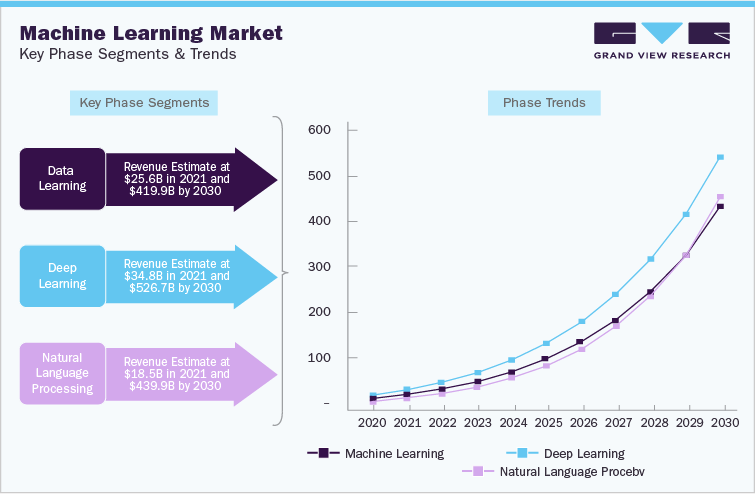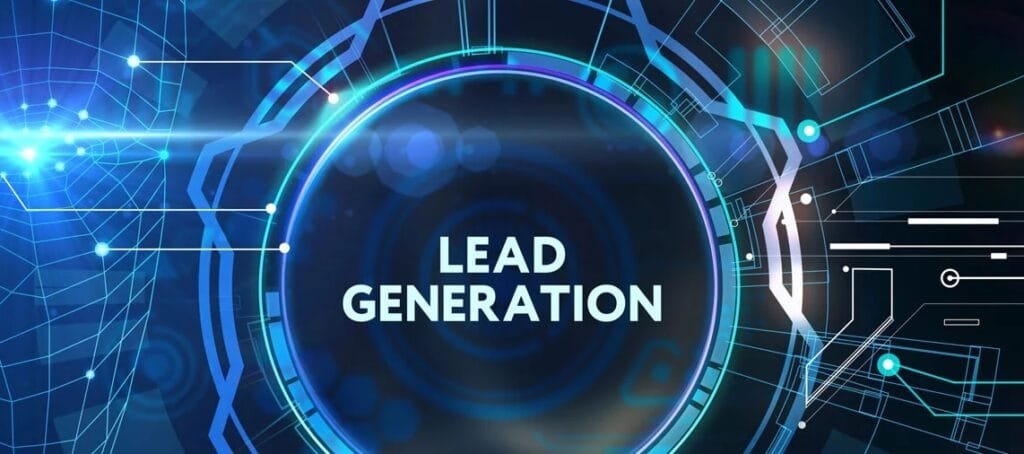The machine learning industry size will witness a notable gain in the wake of the growing use of AI and IoT devices, according to the “Machine Learning Industry Data Book, 2023 – 2030,” published by Grand View Research. Forward-looking companies have exhibited traction for machine learning (ML) to streamline tasks with efficiency, agility, and reliability across business verticals. For instance, ML has received an impetus in cybersecurity to create antivirus software. An unprecedented spike in data and using various sorts of data to train ML models will further gain ground. Organizations are expected to bank on ML-powered services for applications, including voice transcription, sentiment analysis, text-to-speech, translation, and anomaly detection.
The upheaval created by the COVID-19 pandemic furthered the demand for ML across the healthcare and e-commerce sectors. Notably, customized experiences accentuated the trend for hyper-personalization and enhanced customer experience. The technology also provided impetus in the early detection of diseases, research, and treatment. Additionally, AI has the innate ability to update patients’ charts and assess images and tests, thereby helping doctors with diagnoses.
Deep Learning is Cut Above the Rest
Deep learning technology has become sought-after to learn from past instances to make judgments in complex situations. Chipset manufacturers and cloud service providers are expected to receive an impetus from the surging penetration of data mining and image recognition. The trend for face-recognition technology in smartphones, diagnostic imaging in healthcare, and the rising demand for self-driving cars have come on the back of the soaring footfall of deep learning. Moreover, manufacturing sites have shown an inclination for deep learning to automate and streamline operations.
In essence, Japan is counting on technology to foster industrial robots. The robots use image recognition technology with deep learning and 3D images to enhance operation. Besides, the manufacturing sector has depicted traction for deep learning to reduce turnaround and expedite throughput in production. To put things in perspective, deep learning can be used to foster cooperation among robots and detect and prevent imminent malfunctions. The deep learning market was valued at USD 34.83 billion in 2021 and will witness a 34.3% CAGR during the forecast period.
Navigating NLP Trend
Industry leaders have upped their investments in natural language processing (NLP) to boost decision-making, reduce cost, and bolster productivity. Incumbent players are also relying on generative AI tools to generate natural language responses, computer codes, or images from user text prompts. NLP has provided a fillip to companies counting on chatbots to enhance customer experience. Sentiment analysis has received an uptake in search engines to complete queries. At the same time, the trend for NLP has become pronounced to decide patterns in voice recognition to offer expected responses from smart assistants.
The natural language processing market size stood at USD 18.51 billion in 2021 and could expand at 41.3% CAGR during the assessment period. The growth trajectory is partly attributed to the increasing adoption of language-based AI tools across emerging and advanced economies.
Some trends that are expected to redefine the global outlook are highlighted below:
- The advent of ChatGPT, the brainchild of OpenAI, has brought a paradigm shift in NLP and AI to store information and offer detailed responses based on a prompt of user inputs. In January 2023, Microsoft announced an infusion of USD 10 billion into OpenAI following the former’s investment in the latter in 2019 and 2021.
- The use of ML algorithms will be noticeable for data processing, reasoning, and automated computation.
- The Asia Pacific market will contribute significantly to the global market in light of the rising penetration of ML in the automotive, healthcare, and manufacturing sectors and electronic products.
How do Investors perceive North America?
North America’s machine learning industry share will witness an upward trajectory with bullish demand across defense, BFSI, healthcare, retail, and manufacturing sectors. The manufacturing industry has invested in technology for quality control, predictive maintenance, cybersecurity, product development, and inventory management. To put it in perspective, the U.S. and Canada have sought ML to foster intelligence and surveillance and forecast any weird, illegal, or threatening activities.
ML can be used to combat cyberattacks and propel intrusion detection. For instance, in January 2022, the U.S. Department of Defense chose Scale AI to provide readily available technology, underpin operational AI/ML capabilities, and solve AI challenges across the U.S. government. The company will focus on ML, neural networks, and deep learning with an emphasis on NLP-powered products and services, image analysis, and autonomous systems, among others.
The competitive scenario alludes to investments in organic and inorganic strategies to tap potentials and bolster RoI. An emphasis on product offerings, technological advancements, innovation, collaboration, and mergers & acquisitions will encourage forward-looking companies to enhance their footprint. To illustrate, in October 2022, Google was reported to be contemplating pouring at least USD 200 million into Cohere, an AI start-up. It is worth mentioning that the latter makes NLP software that can be used for chatbot tools.
ML is the Future
Machine learning has emerged as one of the most compelling technology trends fostering the fourth industry revolution. Innovators will seek ML to assess massive databases and underpin real-time data reporting, data management, and dissemination based on data collection. ML holds immense promise across cybersecurity, healthcare, and automotive.
Tech content on this site may include contributed articles and partnerships with industry voices. Learn more in our Editorial Policy.





